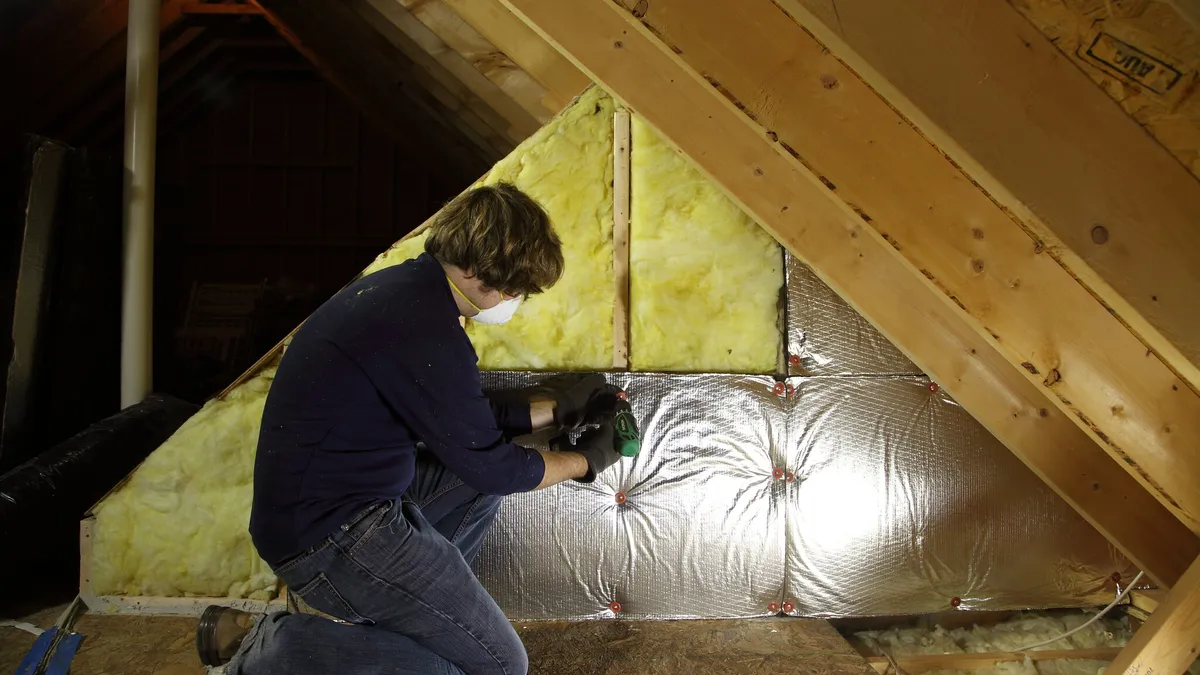Dive Brief:
- The U.S. Department of Energy should do more to market residential tax credits for insulation and building envelope improvements, manufacturer trade associations said in an April 27 letter to the agency.
- The Inflation Reduction Act, passed last year, expanded the 25C tax credit to allow homeowners to take credits for both insulation improvements and qualifying heat pump upgrades in the same year. “That is one of the most significant, positive changes ... and DOE is completely ignoring it,” Curt Rich, CEO and president of the North American Insulation Manufacturers Association, said in interview.
- NAIMA and six other manufacturing groups asked DOE to more prominently feature the benefits of insulation and the incentives available to homeowners on its web site, develop demonstration projects and launch a dedicated energy efficiency help line.
Dive Insight:
Ensuring homes are well-insulated and efficient are keys to successful electrification efforts, energy experts say.
“If you swap out natural gas heating and put in a heat pump — even a highly-efficient heat pump — and it's in a poorly insulated house, your heating bills will go through the roof,” Rich said. “That's obviously something that everybody wants to avoid.”
The American Council for an Energy-Efficient Economy told DOE as much in March, commenting on how Inflation Reduction Act credits could be administered.
“Higher bills are only likely to be an issue for rebates for heat pumps that replace gas furnaces and that are not part of broader home retrofits that reduce heating load,” the group said. “Programs should encourage or require broader retrofits (which may be sequential) that at least ensure good insulation and air sealing along with heat pumps in order to reduce bills.”
But according to Rich, “if you get on the DOE website and you looked at the 25C tax credit, you would have no idea that in the same year you can take both: an up to $2,000 tax credit for a qualifying heat pump, and the $1,200 tax credit for insulation.”
“They're not marketing that feature of the 25C credit,” Rich said. But “that's the kind of multi-measure investment that the homeowner is going to have to be looking at and doing.”
DOE said it "strongly champions" the benefits of insulation and highlights the resource on its new energy savings hub. "We will continue to support innovations in this sector and educate the American public how insulation can slash energy costs," the agency said in a statement.
Along with NAIMA, manufacturers signing the letter include: the Insulation Contractors Association of America, Cellulose Insulation Manufacturers Association, EPS Industry Alliance, Polyisocyanurate Insulation Manufacturers Association, American Chemistry Council and Spray Polyurethane Foam Alliance.
The groups want DOE to do more work to educate consumers on projected savings from multiple-measure efficiency improvements, and to develop a consumer calculator that will project cost savings that result from insulation and air sealing improvements “on their own and in conjunction with other measures.”
“And then you've got the same sort of marketing effort that's going to need to occur going forward as homeowners begin to eyeball the new whole home energy rebate program that will be rolled out in early 2024,” Rich said, and similarly for a new income-qualified electrification rebate program that is coming.
“The answer for all of these incentives is to drive multi-measure improvements in residences. And in order to do that you really need to lean in on education,” Rich said.
Editor's note: This story has been updated to include comment from the U.S. Department of Energy.














